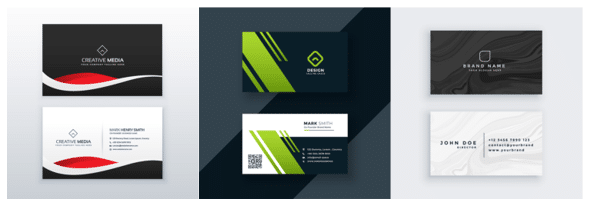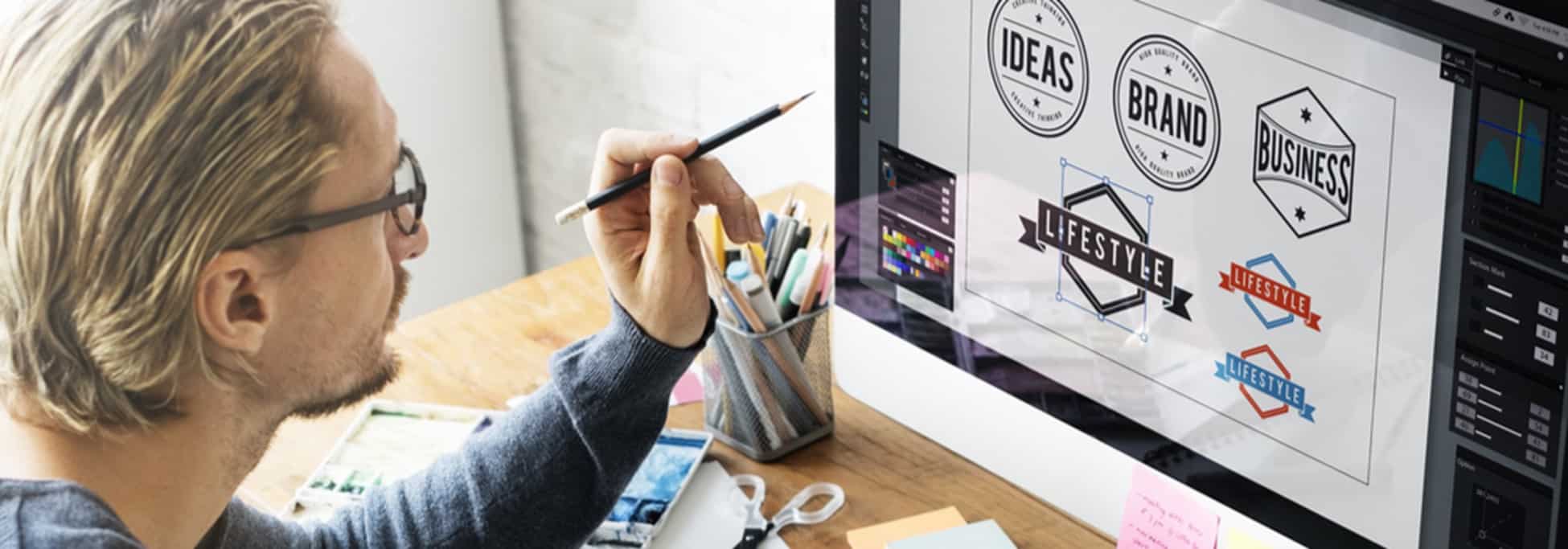A business card is more than just your contact details—it’s a visual representation of you and your company. Effective business cards fulfill a number of marketing needs, including brand recognition, advertisement, call to action, and important contact information.
Keep reading to find out how to design a business card that will leave a lasting impression.
How To Make a Great Business Card in 6 Easy Steps
So, what makes a good business card? Everyone has their own opinion when it comes to crafting the perfect card. Lucky for you, we’ve compiled a list of tips and tricks from the leading marketing experts and skilled graphic designers to help you out. Follow these steps to learn how to design a great business card for your company.
- Organize Your Information
- Choose Your Size and Shape
- Decide On A Typeface
- Follow Basic Design Principles
- Include A Call To Action
- Finalize Your Design
1. Organize Your Information
The first step of business card basics is to decide what to include on your business card. The point of a business card is to provide customers with everything they need to know about your business. This includes your name and job title, business name, logo, phone number, physical address, website, email, social media profiles, and more.
You’ll also want to establish the hierarchy of these details. What should be at the top? What should be the largest? What is the most important for your customer to know? Once you have determined which pieces of information you want to feature on your card, it’s time to start designing!
2. Choose Your Size and Shape
How do you want your business card to appear? You’ll need to decide on an orientation: horizontal or vertical. You will also need to choose the shape and size before starting your business card design.
You can’t go wrong with a classic business card. However, if you want to stand out from the competition, you may want to consider experimenting with the shape of your card. Different shapes of business cards include:
- Standard
- Square
- Rounded Corner
- Square Rounded Corner
- Folded
- Circle
- Oval
In North America, the standard business card size is 3.5 × 2 in. (88.9 × 50.8 mm). This should give you plenty of space to include your business information, contact details, logo, and more. Here are some additional dimensions you’ll want to consider when creating an effective business card design:
Bleed Area: 3.61 × 2.11 in.
When designing your business card, make sure your background color or pattern (if you have one) extends beyond the actual size of the card. This way, you won’t have to worry about getting your cards back from the print shop with white borders or misplaced design elements.
Safe Printing Area: 3.36 × 1.86 in.
Sometimes printers get misaligned, or the print shop cuts your cards slightly off-center. To make sure that nothing gets cut off, try to keep your design within these dimensions. All important text and design elements should remain in the innermost 3.36 × 1.86 in. of your card template.
Business Card Size in Pixels: 1050 × 600 pixels
If you are using a design program or software to create your business card, these pixel measurements will come in handy. Take note that the actual size of the card is 1050 × 600 pixels, the full bleed size is 1083 × 633 pixels, and the safe printing area is 1008 × 558 pixels.
3. Decide On A Typeface
Now it’s time to decide on a typeface! If there’s a specific font incorporated into your website, logo, or other marketing materials, we recommend using that same font on your business card for uniformity purposes. The typeface you choose should represent your brand. If your company is in tech, you should opt for technical, modern fonts. If you’re a writer, consider a serif or typewriter-themed font.
Regardless of the font you choose, it must be easy to read. Never use a font size smaller than 8pt. Additionally, it’s recommended to make your company name and logo at least 12pt, but preferably larger.

4. Follow Basic Design Principles
The most effective business cards follow the basic principles of design. Take into consideration design principles such as emphasis, hierarchy, pattern, white space, and unity. These all work in tandem to create functional, visually appealing designs. Check out our blog to learn how to choose your brand colors.
When it comes to good business card design principles, often less is more. Some of the most effective business card design concepts are the simplest ones. Busy or cluttered designs can overwhelm the eye, so it’s best to focus on simplicity and stray from unnecessary text or graphics.
5. Include A Call To Action
While a call to action (CTA) isn’t a universal business card requirement, it can be helpful when encouraging potential clients to take the next step. Entice customers with a special offer, discount code, social media shoutout, useful tip, or any other incentive that will get them interacting with your business. You can find fun or clever ways to incorporate the CTA into your design or simply place a QR code on the backside of your card and leave the front as-is.
6. Finalize Your Design
The last thing you want is to open a freshly-printed box of new business cards only to discover there’s a typo. One of the most crucial business card design tips is to proofread, proofread, PROOFREAD! Ask a coworker or friend to double-check your card design for spelling errors or anything else that may look a bit off. It never hurts to enlist the help of a second set of eyes! Additionally, double-check and adequately label your final files to avoid any printing confusion.
Once you’re 100% positive that your design is ready to go, send it off to the print shop! Make sure you choose a trusted establishment with experienced professionals who will do your design justice. As we previously discussed, quality is what makes a great business card. Check out these tips for deciding how much to spend on your marketing budget.

Choosing The Right Design Agency For Your Custom Business Cards
Business cards will always be a must-have marketing tool, because nothing beats the first impression of custom branded identity print pieces. Don’t settle for a premade template that thousands of companies are already using—you deserve a design that is unique to your business!
At MARION, our design studio is skilled in digital and conventional mediums to effectively communicate every aspect of your business strategy. We custom design and print business cards on a range of paper stock options and print finishes to grow your brand awareness and satisfy your marketing needs.
Schedule a free consultation today to learn more about our graphic design services in Houston, Texas.

